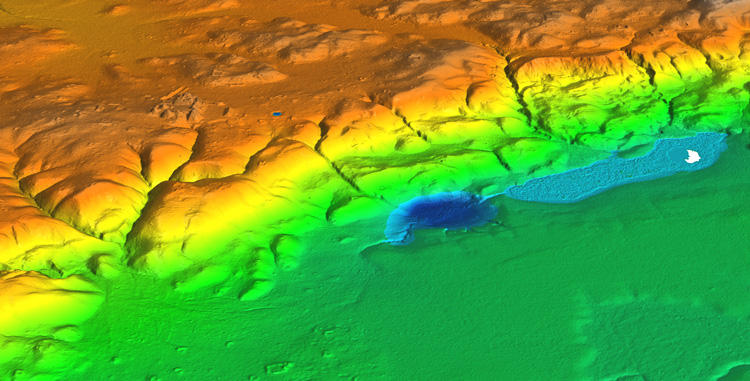Latin America
Related: About this forumTotal warfare among the Maya began earlier than once thought
The burnt ruins of a Maya city in what’s now Guatemala hold clues to its untimely demise at the turn of the 7th century.
BY KATHERINE J. WUTUESDAY, AUGUST 6, 2019

A reproduction of the murals of Bonampak, which depict vivid scenes of Maya life around the end of the 8th century.
Image Credit: El Comandante, Wikimedia Commons
In the year 697, flames consumed the ancient Maya city of Bahlam Jol. In the wake of a blaze set by neighboring Naranjo forces, residents vacated their homes as entire buildings crumbled to the ground.
It was an act of “total warfare,” archaeologists say. This grim scene, described in a study published Monday in the journal Nature Human Behaviour, upends longstanding notions of peace during the Maya civilization’s Classic period, which spanned 250 to 900 CE.
For years, archaeologists have known that this era ended in chaos, hastened by drought and growing political turmoil. But the new findings suggest that large-scale military conflicts—and the destruction they brought—predate the demise of the Maya civilization’s golden age by at least a couple hundred years.
The story first unfolded when a team of researchers led by David Wahl, a paleoclimatologist at the U.S. Geological Survey, was investigating the ruins of a site archaeologists call Witzna (but known to the Maya as Bahlam Jol) in the northeastern part of what’s now Guatemala. Wahl and his colleagues had initially set out to study how drought had affected the ancient city’s agriculture, but were surprised to uncover a 1.2-inch-thick layer of charcoal blanketing the base of a nearby lake, dating to around the end of the 7th century.
More:
https://www.pbs.org/wgbh/nova/article/bahlam-jol-maya-warfare/
Anthropology:
https://www.democraticunderground.com/12294870
democratisphere
(17,235 posts)Very interesting!
Thank you Judi Lynn!
Judi Lynn
(160,527 posts)Judi Lynn
(160,527 posts)Extreme conflicts broke out well before the civilization’s decline, researchers say
BY BRUCE BOWER 11:00AM, AUGUST 5, 2019
In 697, flames engulfed the Maya city of Witzna. Attackers from a nearby kingdom in what’s now Guatemala set fires that scorched stone buildings and destroyed wooden structures. Many residents fled the scene and never returned.
This surprisingly early instance of highly destructive Maya warfare has come to light thanks to a combination of sediment core data, site excavations and hieroglyphic writing translations, say research geologist David Wahl of the U.S. Geological Survey in Menlo Park, Calif., and his colleagues. Organized attacks aimed at destroying cities began during ancient Maya civilization’s heyday, when Witzna and other cities thrived in lowland regions of Central America, the scientists report August 5 in Nature Human Behavior.
Maya civilization’s Classic period ran from around 250 to 950 (SN: 10/27/18, p. 11). Many investigators have assumed that intense military conflicts occurred between 800 and 950, contributing to the Classic Maya demise. Researchers have often assumed that, before 800, Maya conflicts consisted of relatively small-scale raids aimed at taking high-status captives for ransom or sacrifice.
Wahl’s group first noted that hieroglyphic inscriptions on a stone slab at the Classic Maya city of Naranjo state that Witzna was attacked and burned by Naranjo forces for a second time on May 21, 697. Naranjo was located about 32 kilometers south of Witzna. Those inscriptions provide no details about a first Naranjo attack. Writing on the slab uses the term puluuy to refer to Naranjo’s burning of five cities including Witzna, over a five-year span. Some scholars suspect that puluuy attacks targeted only select temples or sacred caves, rather than entire settlements.
More:
https://www.sciencenews.org/article/ancient-maya-warfare-flared-surprisingly-early?tgt=nr


Atlatl weapon
~ ~ ~
Maya more warlike than previously thought
By Robert Sanders, Media relations| AUGUST 5, 2019

This view from a recent laser (lidar) survey shows the entire ceremonial center stretching for 2 kilometers along a limestone ridge overlooking Laguna Ek’Naab (white spot at right), the sampling site for a paleoenvironmental study in Guatemala. (Image courtesy of Francisco Estrada-Belli PACUNAM & Tulane University)
The Maya of Central America are thought to have been a kinder, gentler civilization, especially compared to the Aztecs of Mexico. At the peak of Mayan culture some 1,500 years ago, warfare seemed ritualistic, designed to extort ransom for captive royalty or to subjugate rival dynasties, with limited impact on the surrounding population.
Only later, archeologists thought, did increasing drought and climate change lead to total warfare — cities and dynasties were wiped off the map in so-called termination events — and the collapse of the lowland Maya civilization around 1,000 A.D. (or C.E., current era).
New evidence unearthed by a researcher from the University of California, Berkeley, and the U.S. Geological Survey calls all this into question, suggesting that the Maya engaged in scorched-earth military campaigns — a strategy that aims to destroy anything of use, including cropland — even at the height of their civilization, a time of prosperity and artistic sophistication.
The finding also indicates that this increase in warfare, possibly associated with climate change and resource scarcity, was not the cause of the disintegration of the lowland Maya civilization.
“These data really challenge one of the dominant theories of the collapse of the Maya,” said David Wahl, a UC Berkeley adjunct assistant professor of geography and a researcher at the USGS in Menlo Park, California. “The findings overturn this idea that warfare really got intense only very late in the game.”
More:
https://news.berkeley.edu/2019/08/05/maya-more-warlike-than-previously-thought/
Many more images of this area, Witzna, Guatemala, with their links to their articles:
https://tinyurl.com/yxfv6oyc